You may have heard that fertilizing your Christmas cactus or holiday cactus will enhance its blooms. It is said to make them bloom stronger and more abundantly. This is true.
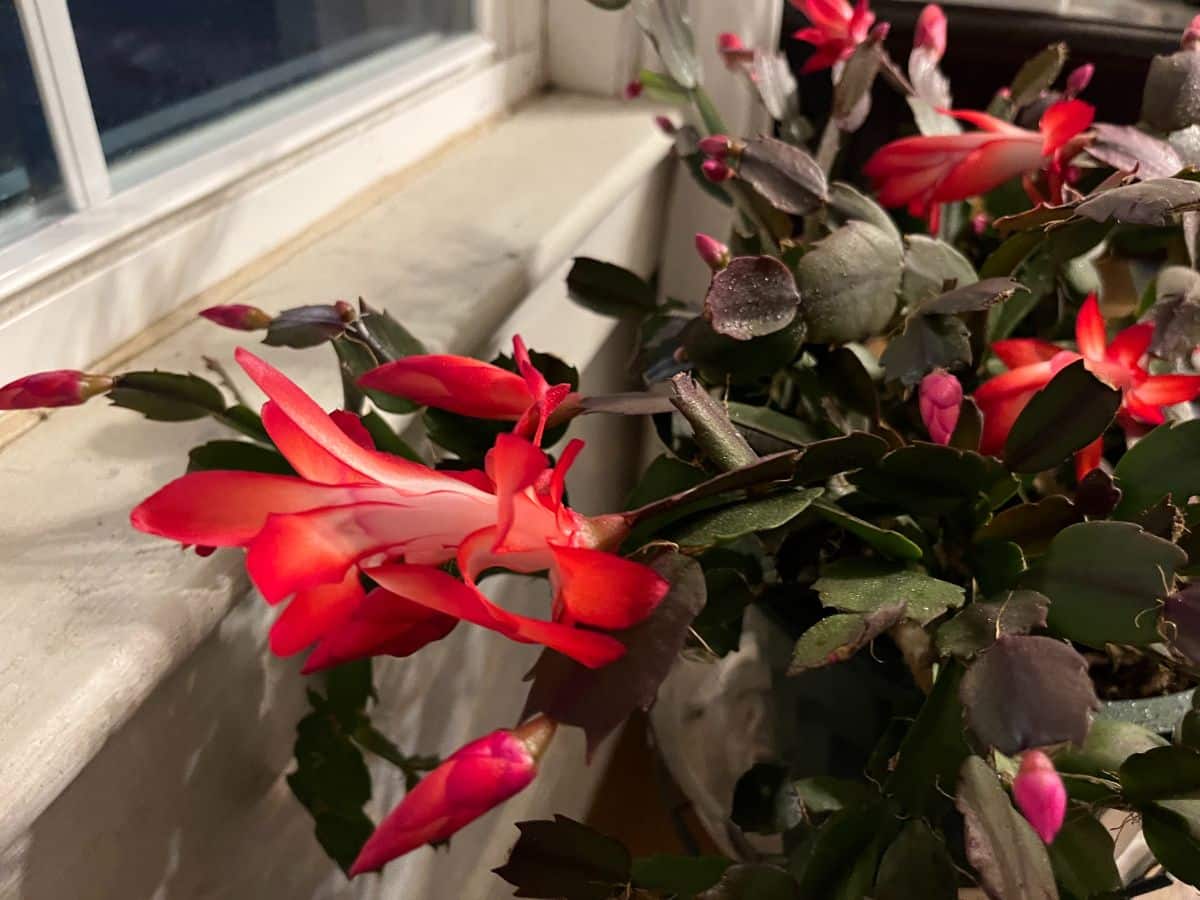
You may also have heard it said that you should not fertilize your Christmas cactus or holiday cactus while it is actively blooming. This is also true.
...Or maybe you didn’t hear that at all, but you assume that if fertilizer makes your cacti bloom bright and beautiful, fertilizing is what you should be doing while your Christmas cactus is in bloom. This would seem logical.
It may seem logical, but this is exactly what you don’t want to do!
What sense can any of this make?
Jump to:
- Making Sense of Fertilizing Your Christmas Cactus
- Why fertilizing your Christmas cactus while it's in bloom is the wrong thing to do
- Don’t fertilize right before it blooms, either
- What to do if you fertilized a blooming Christmas cactus
- When is the Right Time to Fertilize Christmas Cactus and Holiday Cacti?
- Happy, Properly Fertilized Holiday Cacti are Bright and Blooming Beauties
Making Sense of Fertilizing Your Christmas Cactus
When you understand the how, when, and why of fertilizing your Christmas cactus, the reason this is true makes perfect sense.
Why fertilizing your Christmas cactus while it's in bloom is the wrong thing to do
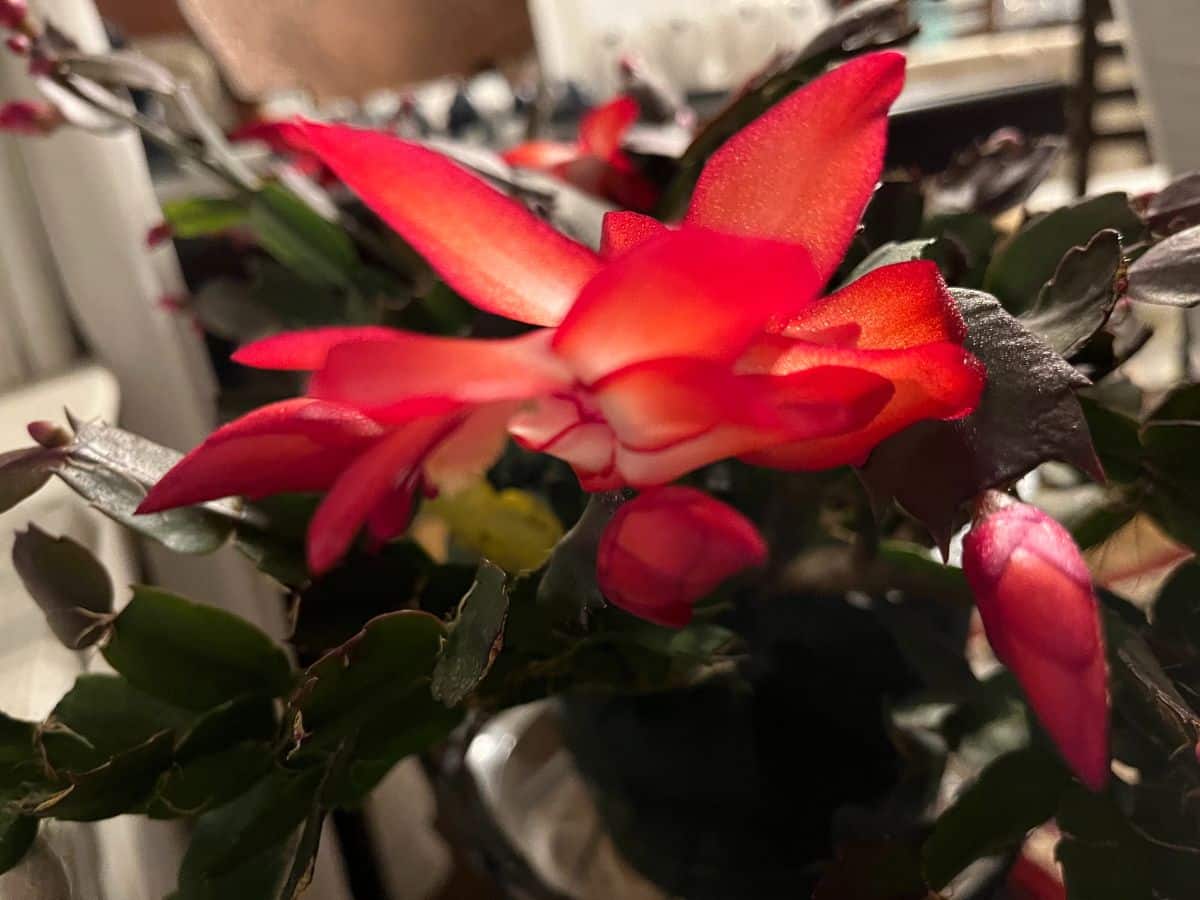
The right time to fertilize Christmas cacti is during their active growing phase. When the plant is in its growth phase, it is using energy, but it is also storing it.
Stored energy is used to create and hold blossoms. The plant will also draw from that strength and energy when it is in its resting period (similar to dormancy in other plants, but a bit different).
However, the plant is not in an active growing phase when it is flowering.
If your Christmas or holiday cactus is flowering, it is actually in a period of rest. This rest period is important for the plant. It needs to rest and regroup before it goes back into its growing phase.
It’s wrong to fertilize a Christmas cactus while it is resting because fertilizer and the injection of energy it brings trigger growth. That will confuse the plant, drain it, and ultimately weaken it.
Since blooming is a part of a Christmas cactus’s rest phase, fertilizing it while it is in bloom is the opposite of what it needs.
Instead of extending your bloom period and producing abundant, long-lasting blooms, you will shorten it. Your cactus is likely to drop its buds and blossoms entirely as it reverts that new-found energy to growth and not flower production.
In short, fertilizing a Christmas cactus while it is blooming will shorten your bloom time and cause it to drop buds and flowers. Not what you want this Christmas!
Don’t fertilize right before it blooms, either
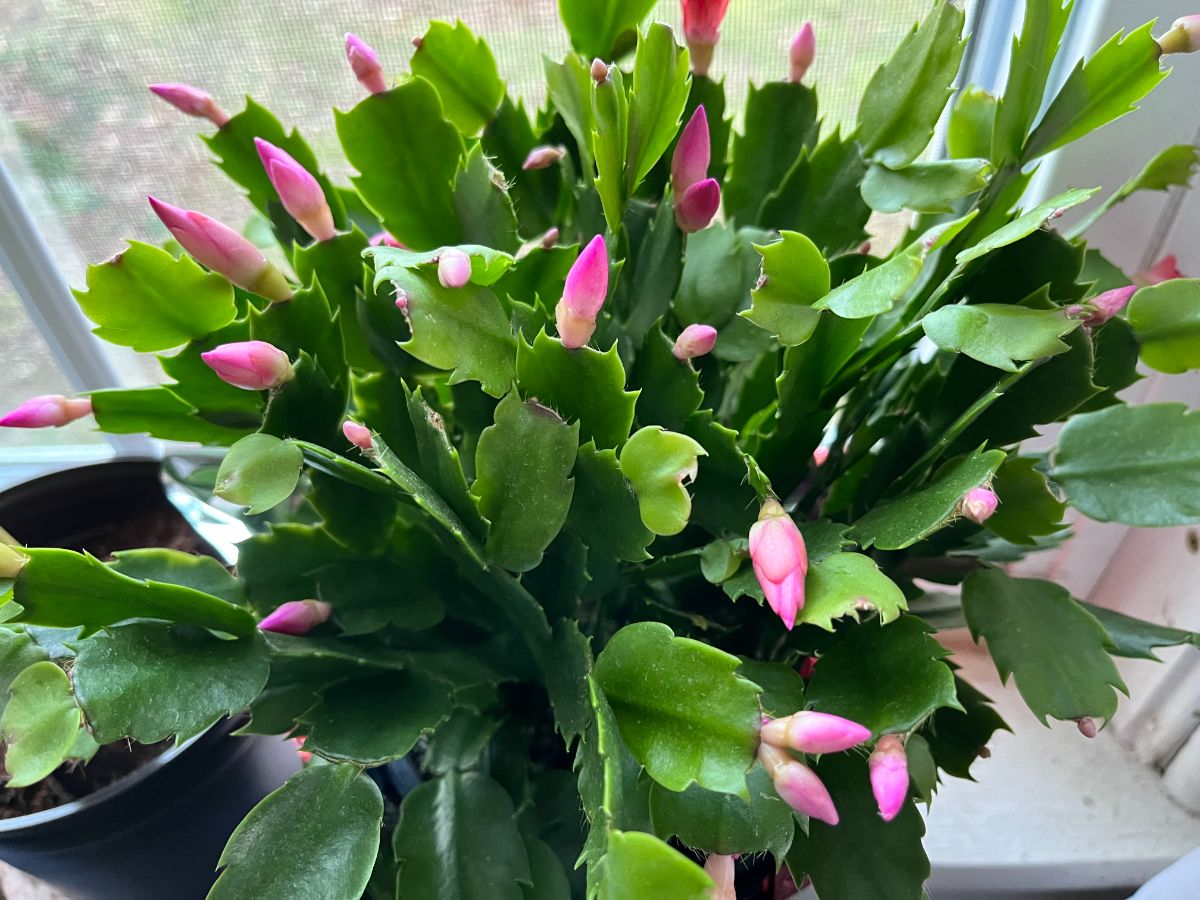
You should not fertilize your Christmas cactus right before it starts to set buds, nor when the buds start to show. In fact, you should anticipate its bloom period and stop fertilizing well ahead of that time.
Shortening day length is part of what triggers a Christmas cactus to rest. This is when you need to stop fertilizing so the plant can prepare for its rest period. I.e., its flowering period.
The right time to stop fertilizing a Christmas cactus is in September. Do not fertilize it after the first of October.
Fertilizing a Christmas cactus when it is about to rest and rebloom is about the same as fertilizing perennials, berry bushes, and landscape plants in the fall when they are about to go dormant. It sends the signal that it’s spring and time to start growing. It weakens the plant by restarting growth at a time when it has no business trying to grow.
If you fertilize when the plant is trying to rest, you may push it right past the bud stage. This is one reason why plants sometimes don’t bloom in some years.
What to do if you fertilized a blooming Christmas cactus
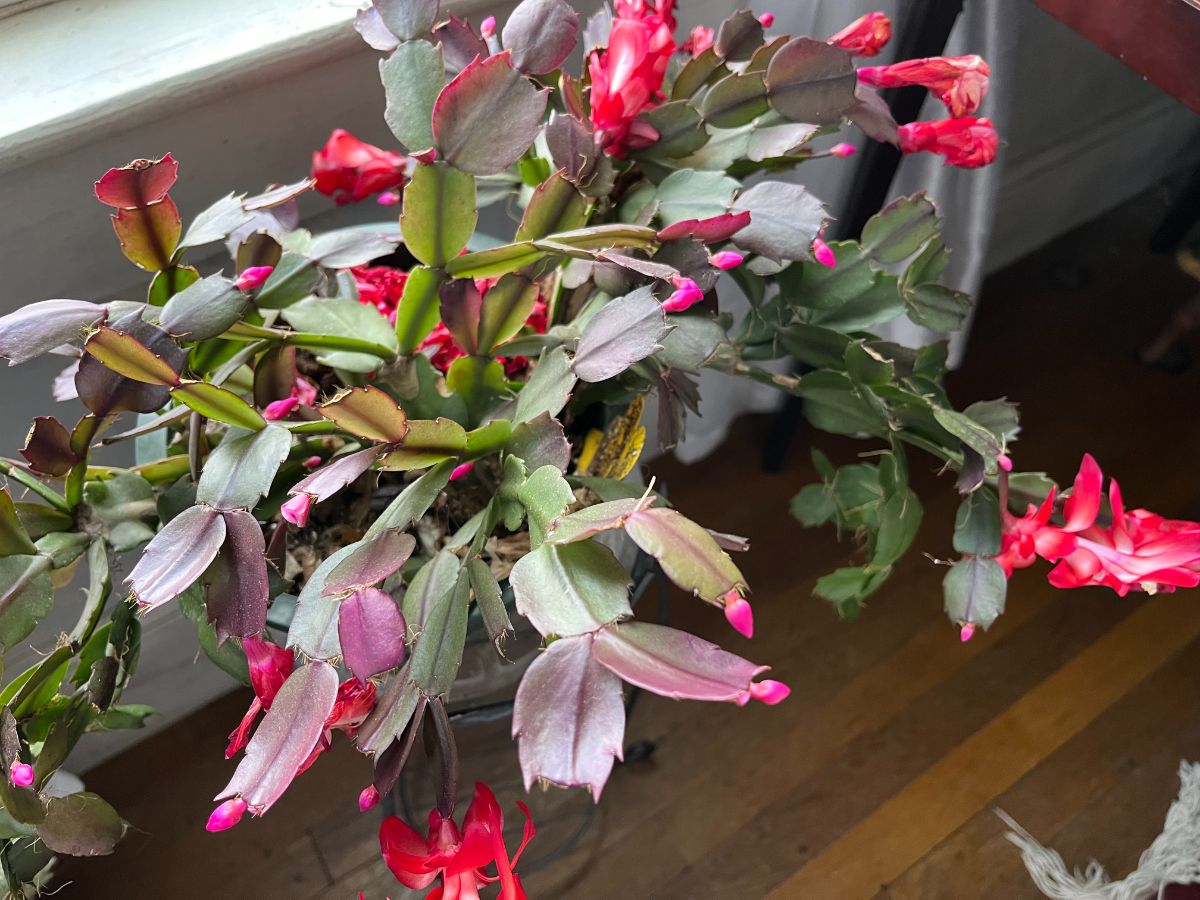
If you didn’t know this and already fertilized a Christmas cactus while it is in bloom, there’s not a lot that you can do about it. Watering and trying to rinse it out would cause your plant to become overwatered, and ultimately, that is worse for the plant than dropping its flowers.
You’re better off just forgetting about it and seeing what the plant does with it. If it was only a light application or two, the plant may drop some buds and then move on as before.
Watch your plant and continue to care for it by keeping it moist but not wet and in an area with good, indirect light.
Stop fertilizing until the time comes around for normal fertilizing. This should help reset the growth cycle of the plant, and by the next time around, your Christmas cactus should be back on track with a normal holiday bloom period. (One that will probably be better and longer for having a solid, planned fertilization schedule behind it!)
See what happens! And learn from this very minor mistake.
When is the Right Time to Fertilize Christmas Cactus and Holiday Cacti?
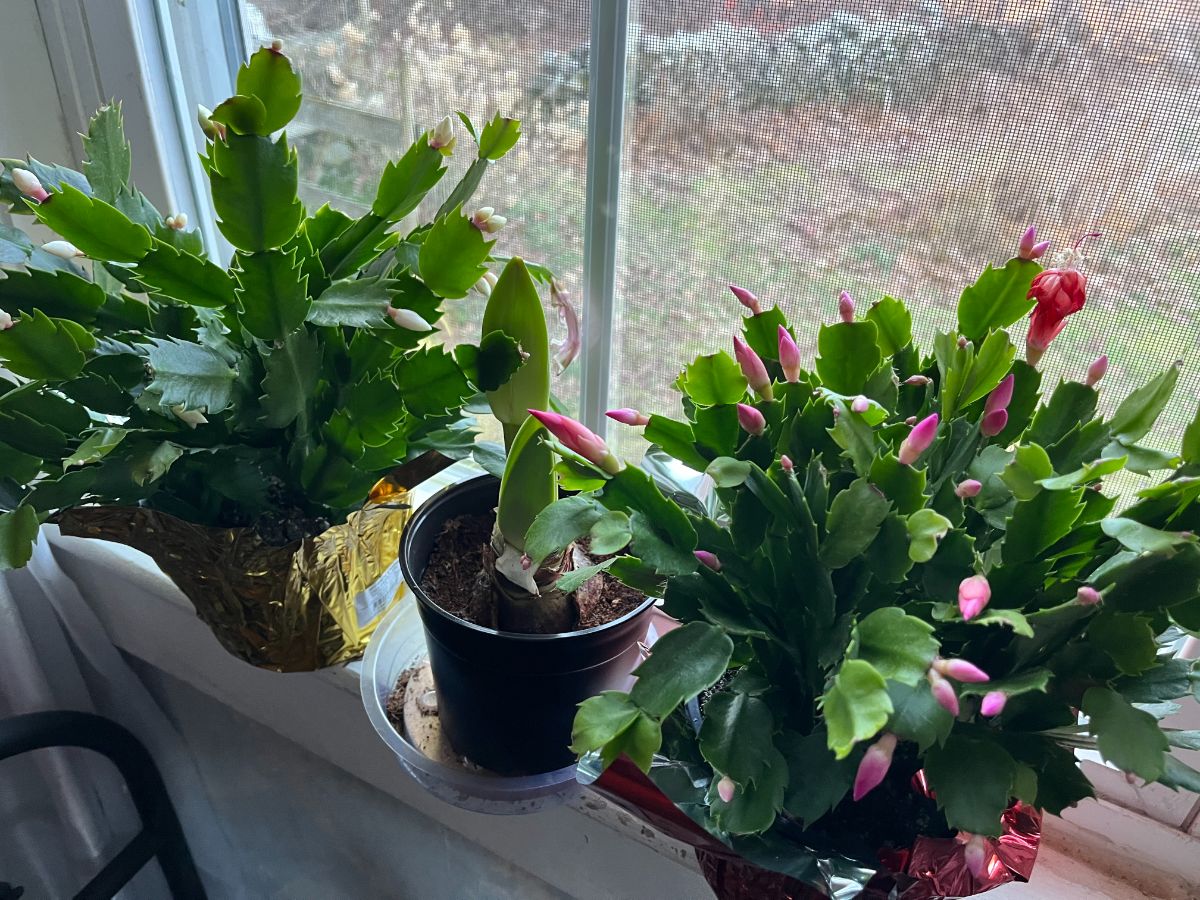
The right time to fertilize your Christmas cactus is when it is in an active growth phase. New growth on the plant will tell you it is now actively growing.
Here are a few tips and some signs to look for that will tell you to start fertilizing your holiday cactus again:
- You see new, lighter, or brighter green growth
- This will usually be in late winter or early spring
- Since your goal is renewed growth, it’s okay to start fertilizing your Christmas cactus based on the calendar and its planned growth time
- Wait three to four weeks after the plant stops blooming to start fertilizing
- The usual fertilization time is February or March through September (stop fertilizing in September)
Fertilize your Christmas cactus with an all-purpose plant food once a month. They need various trace elements and potassium and nitrogen while growing. Believe it or not, coffee grounds are a good source of the nutrients Christmas cacti need!
Christmas cacti have high magnesium needs, so fertilizing with additional Epsom salts once a month during the growing season is a good idea, too. The recommended amount of Epsom salt fertilization for holiday cacti is one-half teaspoon in a half gallon of water.
Give the Epsom salt once a month through the spring and summer months. Stop in late summer (by September). Give the Epsom salts on an opposite week from the all-purpose fertilizer. (In other words, don’t give both in one week—wait for another watering.)
Happy, Properly Fertilized Holiday Cacti are Bright and Blooming Beauties
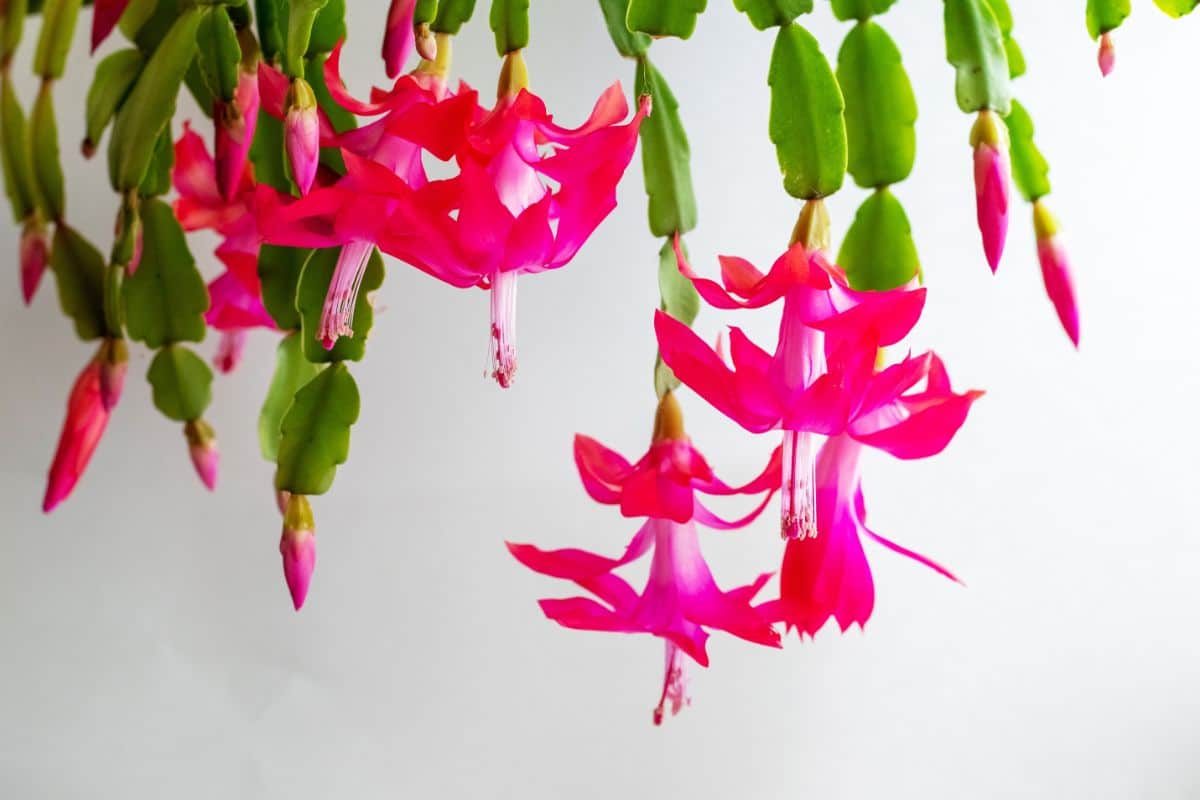
Though there are different holiday cactus types, they all have the same basic care requirements. The information given here is applicable to all types of holiday cacti. You just need to adjust the timing of fertilizing (or not) for Easter cacti, which bloom in the spring.
Other than that, the matter is simple. Fertilize your Christmas and holiday cactuses when they are growing. It will grow bigger, stronger plants, and those will have more abundant, longer-lasting blooms.
It’s a matter of timing. And now you know!
Happy Holidays, and Happy Holiday Cacti!

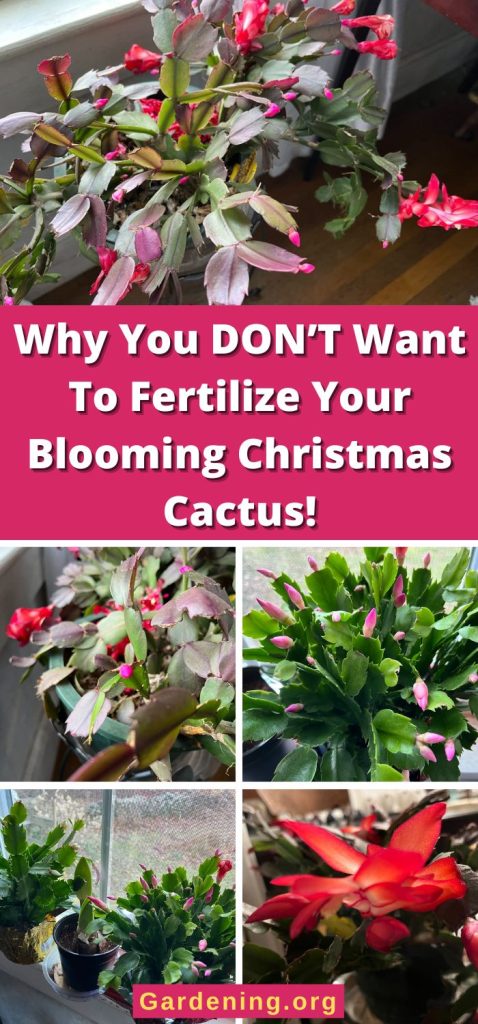

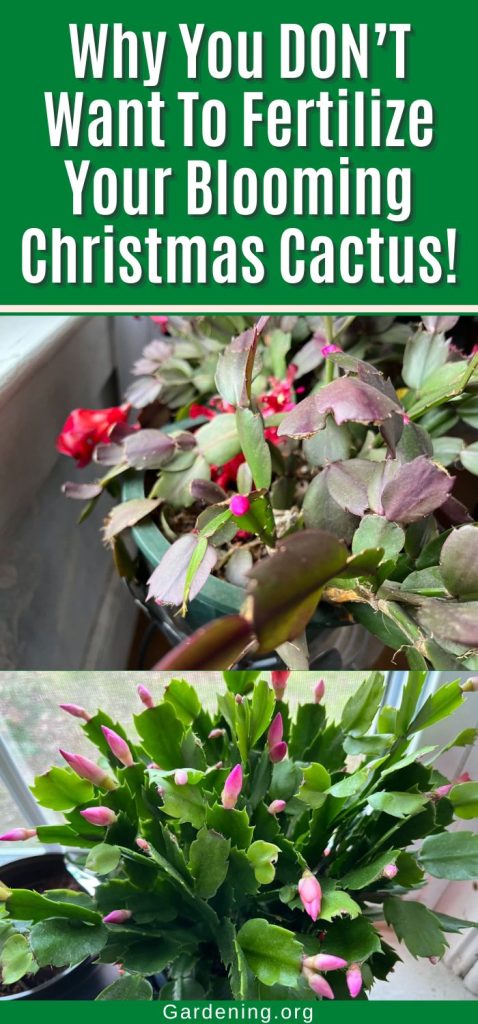

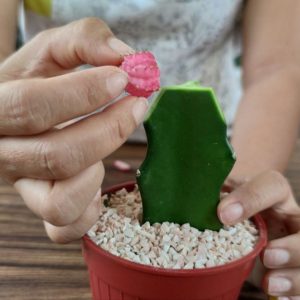
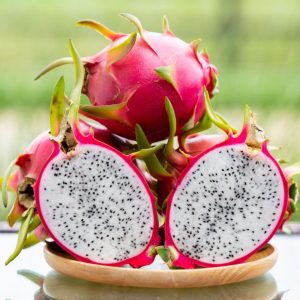
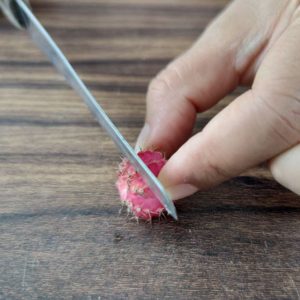
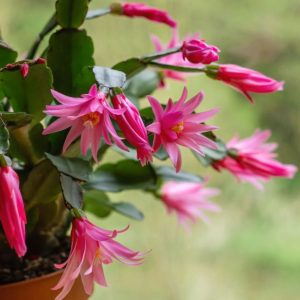
Donna Hodges
Does hummingbirds like these flowers in the winter